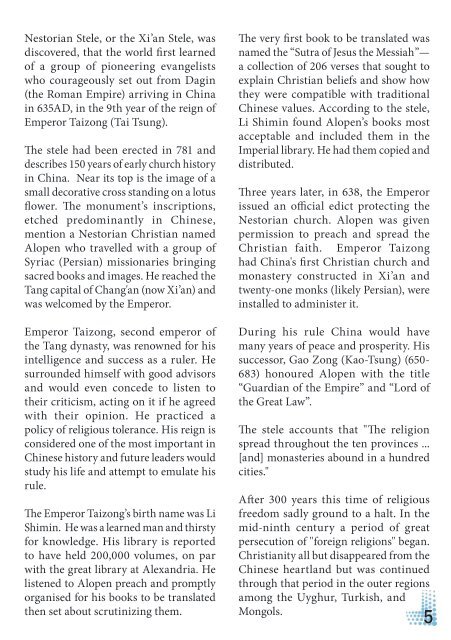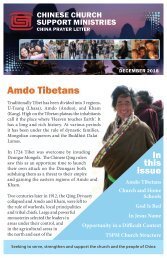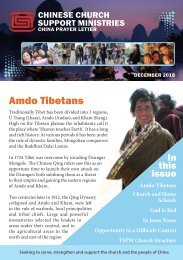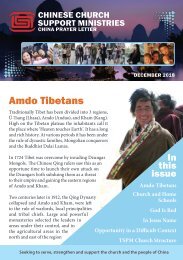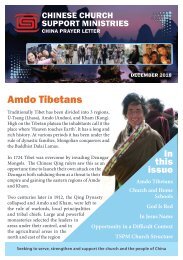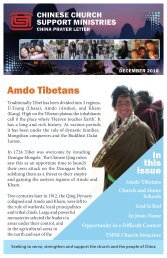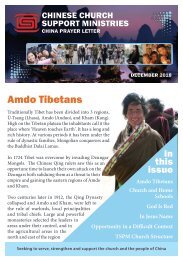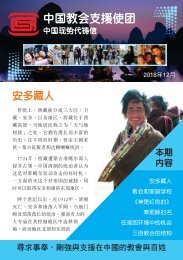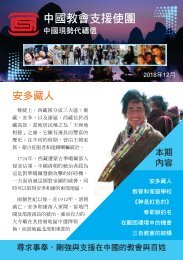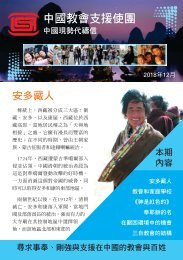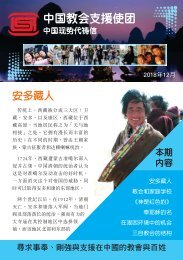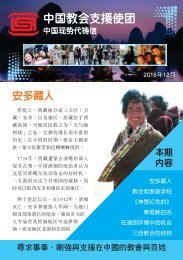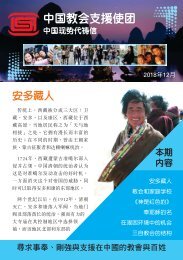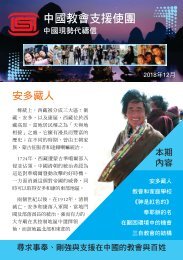UK November 2018
You also want an ePaper? Increase the reach of your titles
YUMPU automatically turns print PDFs into web optimized ePapers that Google loves.
Nestorian Stele, or the Xi’an Stele, was<br />
discovered, that the world first learned<br />
of a group of pioneering evangelists<br />
who courageously set out from Dagin<br />
(the Roman Empire) arriving in China<br />
in 635AD, in the 9th year of the reign of<br />
Emperor Taizong (Tai Tsung).<br />
The stele had been erected in 781 and<br />
describes 150 years of early church history<br />
in China. Near its top is the image of a<br />
small decorative cross standing on a lotus<br />
flower. The monument’s inscriptions,<br />
etched predominantly in Chinese,<br />
mention a Nestorian Christian named<br />
Alopen who travelled with a group of<br />
Syriac (Persian) missionaries bringing<br />
sacred books and images. He reached the<br />
Tang capital of Chang'an (now Xi’an) and<br />
was welcomed by the Emperor.<br />
Emperor Taizong, second emperor of<br />
the Tang dynasty, was renowned for his<br />
intelligence and success as a ruler. He<br />
surrounded himself with good advisors<br />
and would even concede to listen to<br />
their criticism, acting on it if he agreed<br />
with their opinion. He practiced a<br />
policy of religious tolerance. His reign is<br />
considered one of the most important in<br />
Chinese history and future leaders would<br />
study his life and attempt to emulate his<br />
rule.<br />
The Emperor Taizong’s birth name was Li<br />
Shimin. He was a learned man and thirsty<br />
for knowledge. His library is reported<br />
to have held 200,000 volumes, on par<br />
with the great library at Alexandria. He<br />
listened to Alopen preach and promptly<br />
organised for his books to be translated<br />
then set about scrutinizing them.<br />
The very first book to be translated was<br />
named the “Sutra of Jesus the Messiah”—<br />
a collection of 206 verses that sought to<br />
explain Christian beliefs and show how<br />
they were compatible with traditional<br />
Chinese values. According to the stele,<br />
Li Shimin found Alopen’s books most<br />
acceptable and included them in the<br />
Imperial library. He had them copied and<br />
distributed.<br />
Three years later, in 638, the Emperor<br />
issued an official edict protecting the<br />
Nestorian church. Alopen was given<br />
permission to preach and spread the<br />
Christian faith. Emperor Taizong<br />
had China's first Christian church and<br />
monastery constructed in Xi’an and<br />
twenty-one monks (likely Persian), were<br />
installed to administer it.<br />
During his rule China would have<br />
many years of peace and prosperity. His<br />
successor, Gao Zong (Kao-Tsung) (650-<br />
683) honoured Alopen with the title<br />
“Guardian of the Empire” and “Lord of<br />
the Great Law”.<br />
The stele accounts that "The religion<br />
spread throughout the ten provinces ...<br />
[and] monasteries abound in a hundred<br />
cities."<br />
After 300 years this time of religious<br />
freedom sadly ground to a halt. In the<br />
mid-ninth century a period of great<br />
persecution of "foreign religions" began.<br />
Christianity all but disappeared from the<br />
Chinese heartland but was continued<br />
through that period in the outer regions<br />
among the Uyghur, Turkish, and<br />
Mongols.<br />
5


